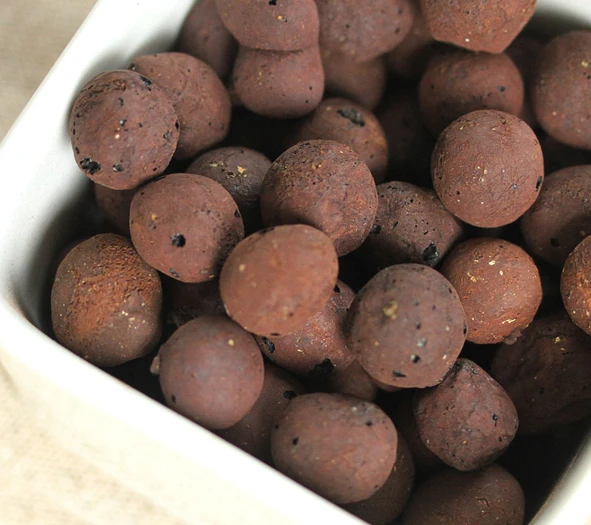Unlocking the Potential of 20 Mesh Cenospheres A Comprehensive Exploration
The utilization of cenospheres, particularly the 20 mesh variety, aligns perfectly with sustainable practices. Since these particles are byproducts of coal combustion, their use in industrial applications contributes to waste recycling and reduces the environmental footprint of thermal power plants. Instead of disposing of fly ash, from which cenospheres are extracted, industries can reprocess this waste into valuable materials. Economically, the light weight and exceptional properties of 20 mesh cenospheres can reduce costs in several manufacturing processes. They enable cost savings by reducing material consumption and are often cheaper than alternative fillers. Furthermore, their integration into products often enhances the market value due to improved performance characteristics. Technical Insights and Expertise For industries intending to leverage the benefits of 20 mesh cenospheres, it is crucial to understand their behavior and compatibility with other materials. Their surface chemistry allows for seamless integration with polymers, making them suitable for composite material development. Advanced research in processing techniques has enabled better control over particle distribution and surface modification, ensuring improved adhesion and dispersion in various matrices. Experts suggest that a comprehensive evaluation of the source and quality of cenospheres is necessary to maintain consistency in applications. The integrity of these particles can vary based on the coal source and combustion conditions, making quality control a pivotal aspect of cenosphere utilization. Challenges and Future Prospects Despite their numerous advantages, 20 mesh cenospheres face challenges such as supply stability and consistency in quality. As the coal industry faces scrutiny for its environmental impact, the availability of cenospheres may fluctuate. However, advancements in alternative energy and sustainable materials research could open new avenues for synthetic or alternative microsphere development, ensuring ongoing availability and application. The future of 20 mesh cenospheres is bright, with ongoing research into their properties and new applications constantly emerging. Innovations in nanotechnology and composite materials science are expected to drive further demand for these versatile particles, positioning them as critical components in the next generation of industrial materials. In conclusion, the exploration of 20 mesh cenospheres reveals a material with extraordinary potential and wide-ranging applications. With their ability to enhance performance while promoting sustainability, these tiny spheres are poised to play a significant role in future industrial advancements, continuing to offer new opportunities for innovation and efficiency.


The utilization of cenospheres, particularly the 20 mesh variety, aligns perfectly with sustainable practices. Since these particles are byproducts of coal combustion, their use in industrial applications contributes to waste recycling and reduces the environmental footprint of thermal power plants. Instead of disposing of fly ash, from which cenospheres are extracted, industries can reprocess this waste into valuable materials. Economically, the light weight and exceptional properties of 20 mesh cenospheres can reduce costs in several manufacturing processes. They enable cost savings by reducing material consumption and are often cheaper than alternative fillers. Furthermore, their integration into products often enhances the market value due to improved performance characteristics. Technical Insights and Expertise For industries intending to leverage the benefits of 20 mesh cenospheres, it is crucial to understand their behavior and compatibility with other materials. Their surface chemistry allows for seamless integration with polymers, making them suitable for composite material development. Advanced research in processing techniques has enabled better control over particle distribution and surface modification, ensuring improved adhesion and dispersion in various matrices. Experts suggest that a comprehensive evaluation of the source and quality of cenospheres is necessary to maintain consistency in applications. The integrity of these particles can vary based on the coal source and combustion conditions, making quality control a pivotal aspect of cenosphere utilization. Challenges and Future Prospects Despite their numerous advantages, 20 mesh cenospheres face challenges such as supply stability and consistency in quality. As the coal industry faces scrutiny for its environmental impact, the availability of cenospheres may fluctuate. However, advancements in alternative energy and sustainable materials research could open new avenues for synthetic or alternative microsphere development, ensuring ongoing availability and application. The future of 20 mesh cenospheres is bright, with ongoing research into their properties and new applications constantly emerging. Innovations in nanotechnology and composite materials science are expected to drive further demand for these versatile particles, positioning them as critical components in the next generation of industrial materials. In conclusion, the exploration of 20 mesh cenospheres reveals a material with extraordinary potential and wide-ranging applications. With their ability to enhance performance while promoting sustainability, these tiny spheres are poised to play a significant role in future industrial advancements, continuing to offer new opportunities for innovation and efficiency.
Latest news
-
The Versatile World of Phlogopite Mica: Properties, Forms, and ApplicationsNewsJul.14,2025
-
The Versatile Applications of Calcined Mica: From Decoration to Industrial UseNewsJul.14,2025
-
The Role of Muscovite Mica in Industrial Insulation MaterialsNewsJul.14,2025
-
The Benefits of Using Expanded Clay Pebbles in Hydroponics and Soil GardeningNewsJul.14,2025
-
Innovative Applications of Mica Flake in Paints and CoatingsNewsJul.14,2025
-
Gardening Expanded Clay Usage: A Complete GuideNewsJul.14,2025
-
The Use of Natural Mica Powder in Skincare ProductsNewsJun.11,2025
Related Products








